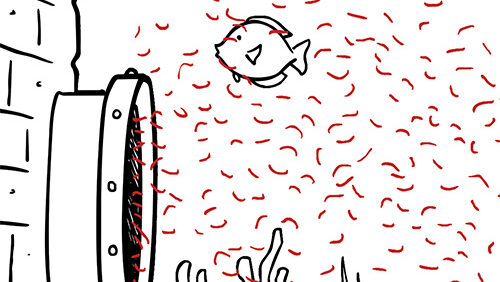A new study, commissioned by The Story of Stuff Project, has found widespread plastic microfiber contamination in commercial bottled water. In total, 19 different bottled water brands were analyzed for microparticle contamination by Abigail Barrows of Ocean Analytics. According to the study, Boxed Water, Fiji, Ozarka, and Evian had the highest levels of plastic microfiber contamination.
Earlier this year, another study found widespread plastic microfiber contamination in global drinking water systems, and this report aimed to find whether or not bottled water products also had similar levels of contamination. The effort is part of a larger campaign from The Story of Stuff Project to eliminate plastic microfiber pollution.
Contamination from microfibers originates from a myriad of sources, but according to a recent report for International Union for Conservation of Nature (IUCN) one of the biggest contributors to microfiber pollution comes from the washing of synthetic clothing discharged through washing machine effluent. Several studies to date have demonstrated that synthetic clothing are found in the bellies of fish and other seafood, and now drinking water and bottled water. Recent research from The Great Lakes is showing nearly all freshwater fish are contaminated and scientists are looking to understand the effects of airborne microfibers and exposure pathways to humans.
Stiv Wilson, Campaigns Director for The Story of Stuff Project, explained:
“This investigation demonstrates the ubiquity of microfiber pollution in water writ large, even in products that consumers pay a premium for. We need to solve this problem upstream and drastically rethink or dependence on persistent fossil-fueled derived textiles that have a very big unintended consequence.
Abigail Barrows, Ocean Analytics, added:
“Although we don’t fully understand yet the health implications of consuming microplastic, the preliminary results of this study show that people are directly ingesting plastic particles when drinking most types of bottled water.”
In addition to the studies results, The Story of Stuff Project has released a short video in it’s continuing work on microfibers to accompany the findings demonstrating the cycle by which microfibers get into our environment, and ultimately, our water. All of our water.
Read the report [PDF]; control procedures [PDF]; and CV of Abigail Barrows, Ocean Analytics [PDF]


